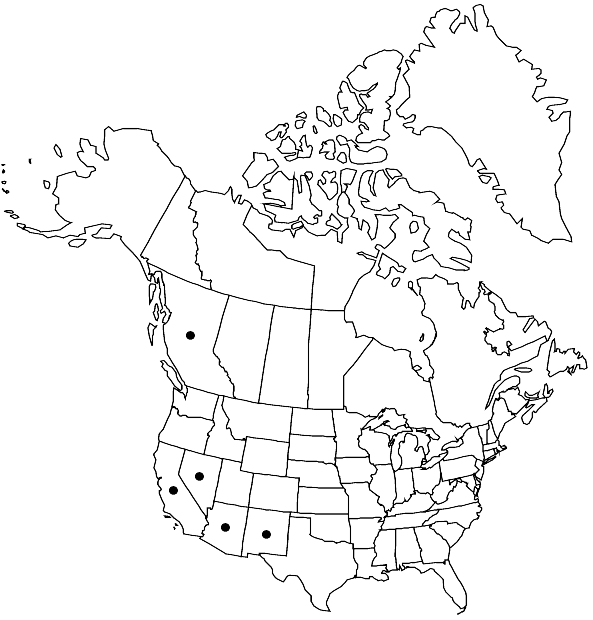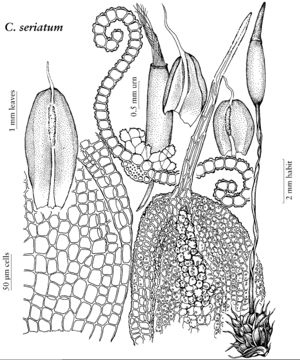Crossidium seriatum
SouthW. Naturalist 3: 117, figs. 1–7. 1959,.
Plants 1–1.5 mm. Leaves lingulate to oblong-ovate, 0.6–1.3 mm, margins revolute from near apex to near base, smooth-celled in the middle and base, apex round to slightly emarginate; costa excurrent, with an abaxial epidermis, filaments of 2–6 cells, cells subspheric, with several papillae per cell, terminal cell subspheric; cells of leaf base 24–66 µm, medial and distal cells 13–26 µm, with several papillae on either side of distal and median cells. Sexual condition cladautoicous. Seta 9–13 mm. Capsule urn oblong-cylindric, 1.5–2.3 mm; operculum 0.7–1.1 mm; peristome strongly twisted, 1015–1100 µm. Spores spheric, finely papillose, 11–13 µm.
Phenology: Capsules mature Jan–Jul.
Habitat: Sandy soil or rocks, along dry washes, in open or shaded places in deserts
Elevation: moderate elevations (400-600 m)
Distribution

B.C., Ariz., Calif., Nev., N.Mex., Mexico (Baja California), Europe (France), Europe (Spain), Europe (Switzerland)
Discussion
The leaf cells with several papillae on either free surface distinguish Crossidium seriatum from C. aberrans. A poorly preserved specimen from Kansas is perhaps a juvenile form with awned leaves and reduced filaments.
Selected References
None.
Lower Taxa
"broad" is not a number."um" is not declared as a valid unit of measurement for this property.
